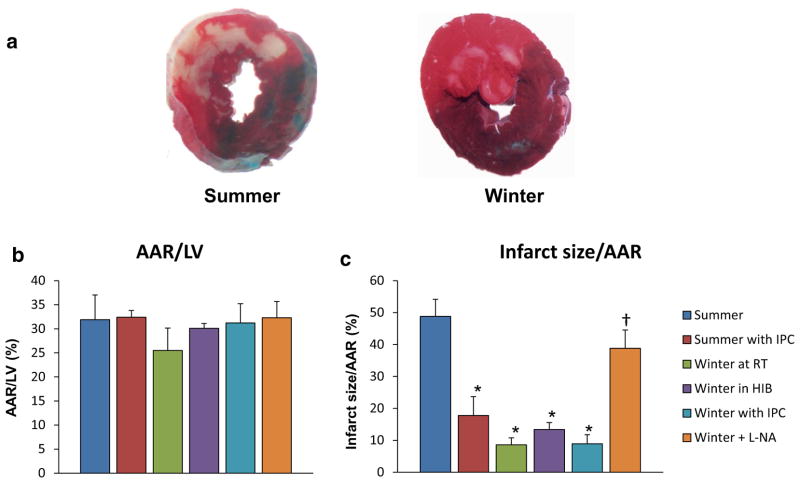Fig. 1.
a Representative cross-sectional slices following the control protocol, 0.1 % Alcian blue dye perfusion and TTC staining in summer (left) and winter (right). The winter animals displayed significantly less infarction when compared with their summer cohorts. b Area at risk (AAR), expressed as a percent of the left ventricle and septum (LV), was similar in all groups. c Infarct size (INF), expressed as a percent of the AAR, was significantly decreased in the winter animals at room temperature (n = 4), winter in the hibernaculum prior to operation (n = 8), and winter with first window preconditioning (n = 5) when compared to summer animals (n = 5). With addition of L-NA, the cardioprotection was lost in the winter animals (n = 3). Furthermore, infarct size was reduced following ischemic preconditioning in the summer (n = 5) when compared to summer animals (n = 5). *p <0.05 vs. summer. †p <0.05 vs. each winter group. Values are presented as mean ± SEM

